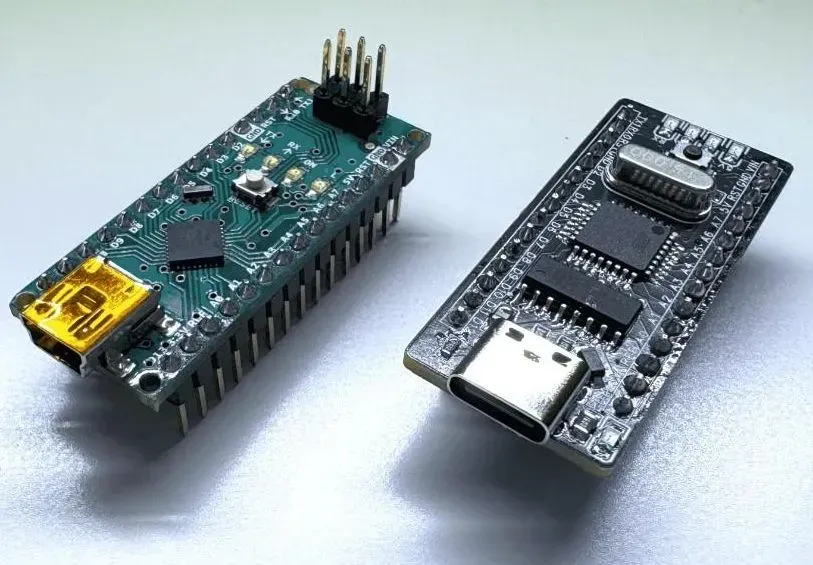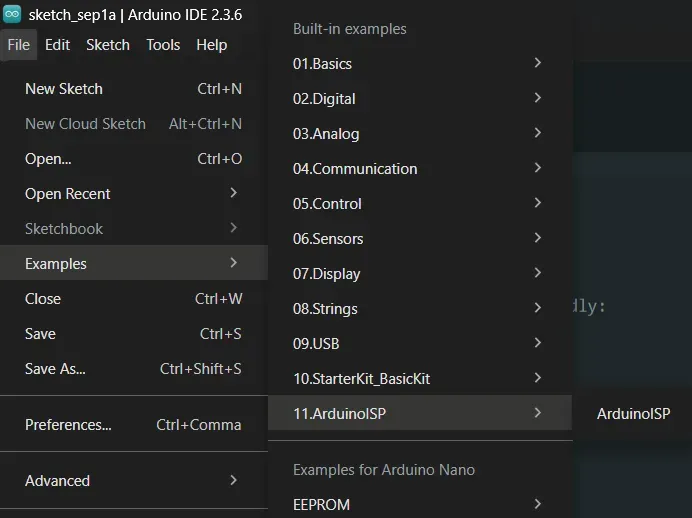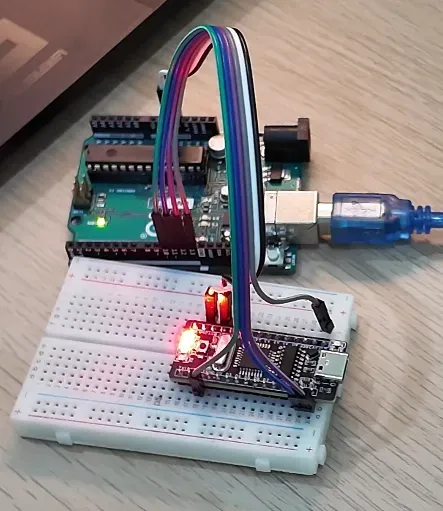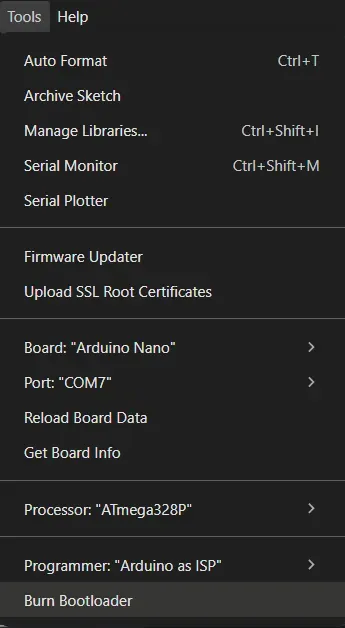 Completed
Completedzhengbingquant_Nano_V1
PROzhengbingquant_Nano_V1
License
:CERN Open Hardware License
Description
Verified and no issues found, ready for PCB fabrication.
zhengbingquant_Nano_V1
YouTube link: https://youtu.be/o9jtSHh7a54?si=MYGmc70yYvMOVar3
哔哩哔哩链接: https://www.bilibili.com/video/BV1T5aczyE8L/?vd_source=7e806c69a8d91200bb913d5da4bf505b
Project team member: zhengbingquant
Category: Microcontroller Board / Arduino-Compatible
Overview
The zhengbingquant_Nano_V1 is a DIY Arduino Nano clone, redesigned with a USB-C connector for modern compatibility. Built around the ATmega328P and CH340C USB-to-Serial, it is fully Arduino Nano compatible and perfect for beginners learning PCB design and microcontrollers.
The board includes 5V & 3.3V regulators, a VIN input (7–12V), and a built-in LED on pin 13. Most components are 0806 SMD, making soldering accessible for beginners. Standard male pin headers ensure compatibility with Arduino shields and breadboards.
This is my first self-designed PCB project as a high school student, made to explore electronics and PCB design. I hope to apply these skills later in my mechanical engineering studies.
Features
-
-
Microcontroller: ATmega328P
-
8-bit AVR RISC architecture
-
Clock Speed: 16 MHz
-
Flash Memory: 32 KB (2 KB used by bootloader)
-
SRAM: 2 KB
-
EEPROM: 1 KB
-
23 I/O pins (14 digital, 6 analog, PWM support)
-
-
USB-to-Serial: CH340C (USB-C connector)
-
Voltage Regulators: 5V & 3.3V onboard
-
Power Input: VIN 7–12V recommended
-
Pin Headers: Standard Arduino Nano male pin headers (breadboard-friendly)
-
Built-in LED: Pin 13
-
Package Sizes: Mostly 0806 SMD → easier soldering for beginners
-
Form Factor: Compatible with Arduino Nano shields & accessories
-
Getting Started with zhengbingquant_Nano_V1
Step 1: Solder Your Board
Tips for beginners:
-
Start with SMD components (resistors, capacitors, ICs) — they are mostly 0806 for easy handling.
-
Use the SMD soldering assistant tool in EasyEDA Pro to help place and align components accurately.
-
Apply solder paste or thin solder wire carefully.
-
After SMDs are done, solder through-hole components like male pin headers.
-
Make sure polarized components (LEDs, diodes, ICs) are oriented correctly.

Step 2: Burn the Bootloader
Why: The board is new and cannot run Arduino sketches until the bootloader is installed.
Requirements: Arduino UNO, USB cable, Arduino IDE
2.1 Open ISP Example
-
In Arduino IDE, go to File → Examples → 11.ArduinoISP → ArduinoISP

2.2 Connect UNO to Nano
| UNO Pin | Nano Pin |
|---|---|
| D10 | RESET |
| D11 | D11 |
| D12 | D12 |
| D13 | D13 |
| 5V | 5V |
| GND | GND |

2.3 Upload “Arduino as ISP” to UNO
-
Select Arduino UNO and the correct COM port.
-
Compile and upload the ArduinoISP sketch.
2.4 Burn Bootloader to Nano
-
Keep UNO connected to Nano and the computer.
-
In Arduino IDE:
-
Board → Arduino Nano
-
Processor → ATmega328p
-
-
Click Burn Bootloader.
-
When the console shows
"avrdude done", the bootloader is successfully installed.

Step 3: Test Your Board
-
Open the Blink example in Arduino IDE.
-
Upload it to your Nano.
-
The built-in LED on pin 13 should blink.
Step 4: You’re Ready!
Your zhengbingquant_Nano_V1 is now fully functional. With USB-C and Arduino compatibility, it’s ready for your experiments, learning, and projects.
Purpose:
This project serves as a stepping stone for beginners to dive into PCB design and microcontroller programming. It bridges the gap between learning electronics and practical application, while also being a foundation for future mechanical engineering projects that integrate electronics.
Design Drawing
 The preview image was not generated, please save it again in the editor.
The preview image was not generated, please save it again in the editor.BOM
 Bom empty
Bom empty Clone
CloneProject Members
 Empty
Empty


Comment